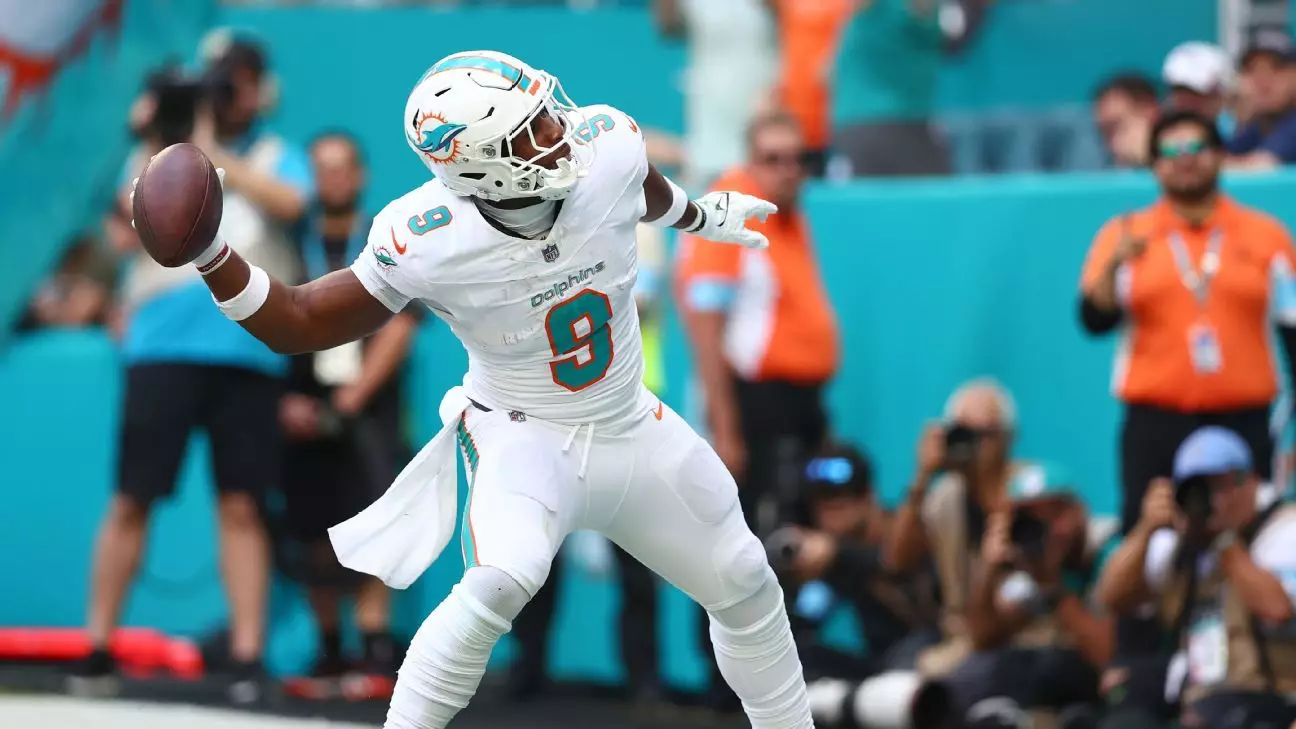The recent chatter surrounding the Pittsburgh Steelers’ interest in Miami Dolphins tight end Jonnu Smith showcases a curious intersection of need and availability in the inherently unpredictable world of the NFL. As discussions rekindle over a potential trade, it’s crucial to evaluate what this signals not just for the teams involved, but the players at the heart of these negotiations. Given that Smith is reportedly looking to renegotiate his current contract, this potential maneuver could reveal more about the Dolphins’ roster stability than anyone might want to admit.
Smith’s impressive performance last season established him as a vital asset for the Dolphins. However, his apparent desire for a better deal, coupled with Pittsburgh’s search for offensive help after trading George Pickens, indicates churn within the league that might not lead to everyone coming out better off. The potential trade appears to have come out of necessity rather than a well-thought-out strategy for either team. For Miami, allowing a standout player like Smith to leave could prove detrimental, especially if other core players follow suit due to discontent.
The Agent’s Predicament: What Happens Next for Smith?
Drew Rosenhaus, Smith’s agent, has made it publicly clear about his client’s preference to stay in Miami. Yet, when an athlete’s agent expresses a desire for them to remain with their current team while simultaneously engaging in trade talks, the complexities begin to emerge. It places athletes in a precarious situation – they must tread lightly, navigating their ambition for success while being perceived as ungrateful if they seek improvements in pay or terms. Smith acknowledges Miami as his “dream team,” and his loyalty deserves respect. However, the nature of professional sports often clouds such sentiments with negotiation and ambition.
Smith has set records that would make him a cornerstone of any franchise, and yet, it begs the question: are players merely pawns in a game decided by management’s budgetary constraints and business decisions? The upcoming negotiations between Smith and the Dolphins evoke a classic football dilemma: should loyalty override financial considerations, or is it all about maximizing potential earnings while the clock is ticking?
The Steelers’ Depth Chart: A Risky Game?
While the Steelers arguably have the tight end depth necessary to withstand the loss of Smith, the overarching strategy of acquiring him raises eyebrows. Pat Freiermuth represents a solid investment, and the newly signed Donald Parham Jr. has shown flashes of success previously. With two young tight ends already in the fold, introducing a record-breaking player like Smith could conflict more than it would complement. What does this say about Pittsburgh’s game plan moving forward?
A lack of alignment in the vision of the coaching staff could lead to a tangle of offensive inefficiency. Bringing in a player like Smith would require careful management of their roles, making the prospect of a trade feel more like a band-aid solution rather than a well-thought-out strategy for long-term success. Will the Steelers’ coaching staff be willing to adjust their game strategy to accommodate Smith? If not, the entire endeavor may prove counterproductive.
Loyalty vs. Business: The NFL’s Harsh Reality
As we peel back the layers of logistics, contracts, and negotiations, the unfortunate truth remains that the loyalty players invest in their teams often gets thrown to the wayside in favor of business decisions encapsulated by contracts and salary caps. Smith’s apparent affection for the Dolphins exemplifies a player’s passion intersecting with the harsh operational realities of the NFL. Agents like Rosenhaus and athletes like Smith encounter a dilemma that’s becoming all too common in professional sports: how to balance personal aspirations with the unforgiving nature of franchise management.
As Smith weighs potential opportunities with Pittsburgh against staying in Miami, it’s clear that beyond the numbers and the contracts, the real issue lies in the NBA’s ongoing struggle between loyalty and financial pragmatism. As fans, we’re left to ponder which side of this balance ultimately defines a player’s worth while accepting that, too often, their voices are drowned out by the chorus of dollar signs and contract negotiations. This landscape requires a serious reevaluation of how teams value their players, not merely in terms of statistics, but as human beings whose dreams and ambitions deserve recognition.


Leave a Reply